If you’ve ever wondered how the Amish manage to preserve their food so effectively without modern conveniences, you’re not alone. The truth is, the Amish are masters of traditional food storage methods, with the root cellar being a staple in almost every Amish household. But there’s a secret, there are certain foods that the Amish will never, ever store in their root cellar.
Why? Because these foods spoil easily, attract pests, or even become dangerous under the wrong conditions. The Amish know better than to risk it. If you want to level up your food storage game and make sure you’re not making dangerous mistakes, keep reading.
Tomatoes
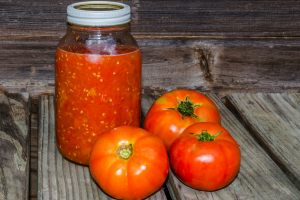 Tomatoes are a classic example of what NOT to store in a root cellar. You might think they’re fine because they’re a fresh vegetable, right? Well, the Amish know better.
Tomatoes are a classic example of what NOT to store in a root cellar. You might think they’re fine because they’re a fresh vegetable, right? Well, the Amish know better.
The problem with tomatoes is that they ripen too quickly, even in the relatively cool and damp environment of a root cellar.
Once they start ripening, they release ethylene gas—which speeds up the spoilage of other fruits and vegetables stored nearby.
Instead, the Amish preserve tomatoes by canning them. The heat of the canning process kills bacteria and locks in the freshness. If you’re tempted to stash your tomatoes in the root cellar, stop! Just find the chapter about canning from The Amish Ways and get to canning instead.
Onions and Garlic
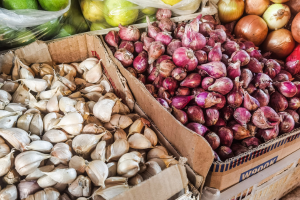 Another big no-no for the root cellar is onions and garlic. The Amish avoid storing these pungent bulbs in the cellar because of their susceptibility to mold.
Another big no-no for the root cellar is onions and garlic. The Amish avoid storing these pungent bulbs in the cellar because of their susceptibility to mold.
Root cellars tend to be moist, which is the perfect breeding ground for mold growth.
Onions and garlic need a dry, airy environment—not the damp and enclosed atmosphere of a cellar.
So, what do the Amish do? They braid their onions and garlic and hang them in a cool, dry place, like a barn or shed. If you want your onions and garlic to stay fresh and edible for months, follow their lead and keep them out of the root cellar. If you do however want to make a cellar that would be worth having, you can find out how to make this underground bunker you can build yourself with less than $400, which will protect not only your goods but also your life in case of a major disaster.
Potatoes and Apples Together
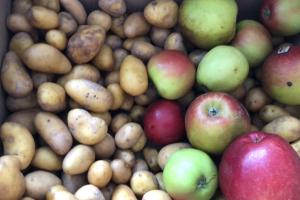 Yes, potatoes and apples are both root cellar classics, but never together. This is a crucial piece of Amish wisdom. Apples release ethylene gas as they ripen, which causes potatoes to sprout prematurely. The result is a mess.
Yes, potatoes and apples are both root cellar classics, but never together. This is a crucial piece of Amish wisdom. Apples release ethylene gas as they ripen, which causes potatoes to sprout prematurely. The result is a mess.
Sprouted potatoes can quickly become unsafe to eat due to the formation of toxic compounds like solanine.
The Amish are careful to store their apples and potatoes in separate areas. If you’re planning on storing both in your root cellar, remember to keep them as far apart as possible, or better yet, find a different storage location for one of them. Your health depends on it.
Cabbage
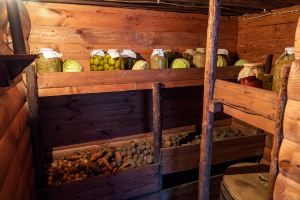 Cabbage is another surprising item that the Amish avoid storing in the root cellar. Sure, it seems like it would do fine, but cabbage tends to release a strong odor over time.
Cabbage is another surprising item that the Amish avoid storing in the root cellar. Sure, it seems like it would do fine, but cabbage tends to release a strong odor over time.
This odor can permeate the root cellar, affecting the taste and smell of other foods stored nearby. Not to mention, cabbage can attract pests like rodents if stored improperly.
Instead, the Amish often ferment cabbage into sauerkraut, which is an excellent way to preserve it without risking spoilage or pest infestation. Plus, it provides a great source of probiotics for those long winter months. And speaking of health, this Amish Ibuprofen is a great DIY natural remedy for your health all year round, and you can make it with only a few ingredients you probably already have.
Winter Squash
 Winter squash, despite its tough exterior, doesn’t belong in the root cellar.
Winter squash, despite its tough exterior, doesn’t belong in the root cellar.
The Amish know that squash needs a slightly warmer, drier environment to keep for extended periods.
A root cellar, with its cold and sometimes damp conditions, can lead to premature rotting and mold growth on squash.
Instead, the Amish keep their winter squash in a cool, dry pantry or even an attic space where the temperatures remain stable but not as cold as a cellar. This way, the squash can last for several months without any issues.
Honey
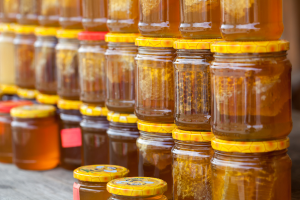 It might come as a surprise, but honey is another item that you’ll never find in an Amish root cellar.
It might come as a surprise, but honey is another item that you’ll never find in an Amish root cellar.
Honey is extremely sensitive to moisture, and the high humidity levels in a root cellar can cause it to absorb water, leading to fermentation and spoilage.
Honey is naturally anti-bacterial and has an indefinite shelf life if stored properly, but only if it’s kept in a dry environment.
The Amish store honey in tightly sealed jars, in a cupboard or pantry away from extreme temperatures and humidity. Take note—if you want your honey to last forever, keep it out of the root cellar. Or you can try to preserve other foods in honey following this recipe.
Bread and Baked Goods
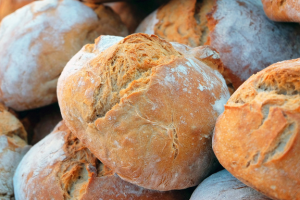 Storing bread and baked goods in the root cellar might seem like a good idea to keep them cool, but it’s a huge mistake.
Storing bread and baked goods in the root cellar might seem like a good idea to keep them cool, but it’s a huge mistake.
The Amish understand that the humidity in a root cellar will cause bread to go moldy much faster than if it were stored in a dry place. Mold thrives in moist environments, and the root cellar is a haven for it.
Related: What the Amish Ate During the Great Depression
Instead, the Amish bake bread as needed or freeze it to maintain freshness. If you’re baking bread for long-term storage, freezing is your best option. Otherwise, keeping it in a bread box in a cool part of your kitchen will suffice for short-term storage.
Nuts and Seeds
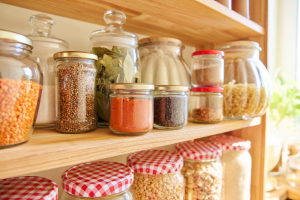 Nuts and seeds are also on the list of foods the Amish keep far away from the root cellar. These foods are highly susceptible to moisture, which can lead to mold growth and rancidity.
Nuts and seeds are also on the list of foods the Amish keep far away from the root cellar. These foods are highly susceptible to moisture, which can lead to mold growth and rancidity.
Once they absorb even a bit of moisture, they start losing their quality and can quickly become inedible.
The Amish store their nuts and seeds in airtight containers, often in a pantry or other dry space. For longer-term storage, they may freeze them to keep them fresh. If you’re tempted to put your nuts in the root cellar, resist! The moisture isn’t worth the risk.
Dairy Products
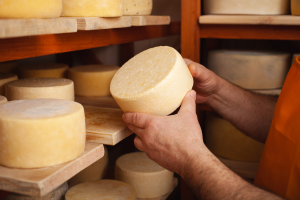 You will never find dairy products like butter or cheese in an Amish root cellar. While the temperature might seem ideal, the moisture is a major problem.
You will never find dairy products like butter or cheese in an Amish root cellar. While the temperature might seem ideal, the moisture is a major problem.
Dairy products can quickly become contaminated with bacteria in a damp environment, leading to spoilage and foodborne illness.
The Amish prefer to store their dairy in cold cellars or spring houses, where the temperature is cool but the moisture levels are much lower. If you’re storing cheese, consider wax-coating it and keeping it in a refrigerator or similar cool, dry area.
Alternatives the Amish Prefer
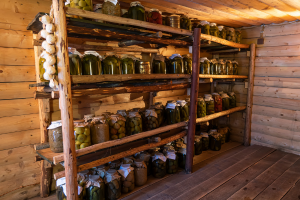 The Amish understand that food storage isn’t one-size-fits-all.
The Amish understand that food storage isn’t one-size-fits-all.
Each food has its own needs, and knowing where to store them can be the difference between survival and a big pile of rotten produce.
Here are some alternatives they prefer:
- Pantries for dry goods: Pantries are ideal for foods like onions, garlic, winter squash, and honey, as they offer a dry environment that helps prevent mold and spoilage. Remember that mold spreads and you might have a health hazard on your hands. To be safe, make sure you also learn about at least one home remedy for mold removal you can use.
- Canning and fermentation: Instead of risking the spoilage of tomatoes and cabbage, the Amish turn to canning and fermentation, preserving these foods in a safe and effective way.
- Freezing: For bread, nuts, and seeds, freezing is a simple and efficient way to prolong shelf life without risking exposure to moisture.
Final Thoughts
The Amish have perfected the art of food storage over generations, and their wisdom can teach us a lot about making the most of what we have. A root cellar is an incredible tool, but it’s not suitable for everything. Knowing which foods to avoid putting in your root cellar can save you from unnecessary waste and, more importantly, help keep your family safe.
Don’t let common mistakes lead to spoiled food or worse—follow the Amish way and be smart about what goes into your root cellar. The difference between thriving and struggling can come down to the small details, and proper food storage is one of them. Stay informed, stay prepared, and remember—the Amish never store these foods in the root cellar, and neither should you. There is a lot of useful information in an amazing guide, called The Amish Ways, written by Eddie Swartzentruber, who grew up in an Amish community but left when he was just 17. In this book, he’s opening up about their way of life and sharing their best-kept secrets—simple, natural tips that could make your life so much healthier.
You may also like:
 16 Items FEMA Tells You to Stockpile and Why
16 Items FEMA Tells You to Stockpile and Why
What Amish Would Never Store in Their Pantry, but Most Americans Do! (Video)
These Common Items Will Become a Luxury When SHTF

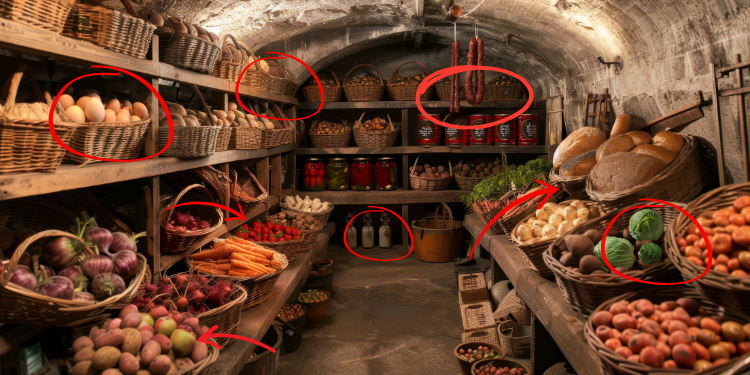




















You can keep bread in your fridge, and you can also store it for long periods in your freezer
Bread will last several weeks in the fridge and still taste good if kept in a sealed bag.
Bread kept in the freezer will develop frost on it and then taste terrible
Bread gets stale/dry very fast in the fridge. We store bread all the time in the freezer and if there is frost on the bread, just brush it off. If stored in the freezer it will still be fresh when thawed out. So, we either store bread in the pantry to be eaten soon, or if more time is needed to eat it, pop it in the freezer.
True amish don’t use electricity, therefore they don’t have freezers.
But, what can you store in a cellar? This is a rather large quotation of what not to.
There is one other item you NEVER store with apples! It’s CARROTS! The off-gassing of the apples makes them lose their sweetness and take on a nasty medicinal flavor…good for little or nothing after that! Found this out the hard way, and now know better!
The Evil Lisa Blake has stolen the identity of the
Good Lisa Blake.
How about we hang Evil Lisa upside down in the outhouse.
Ya….year of the snake…..